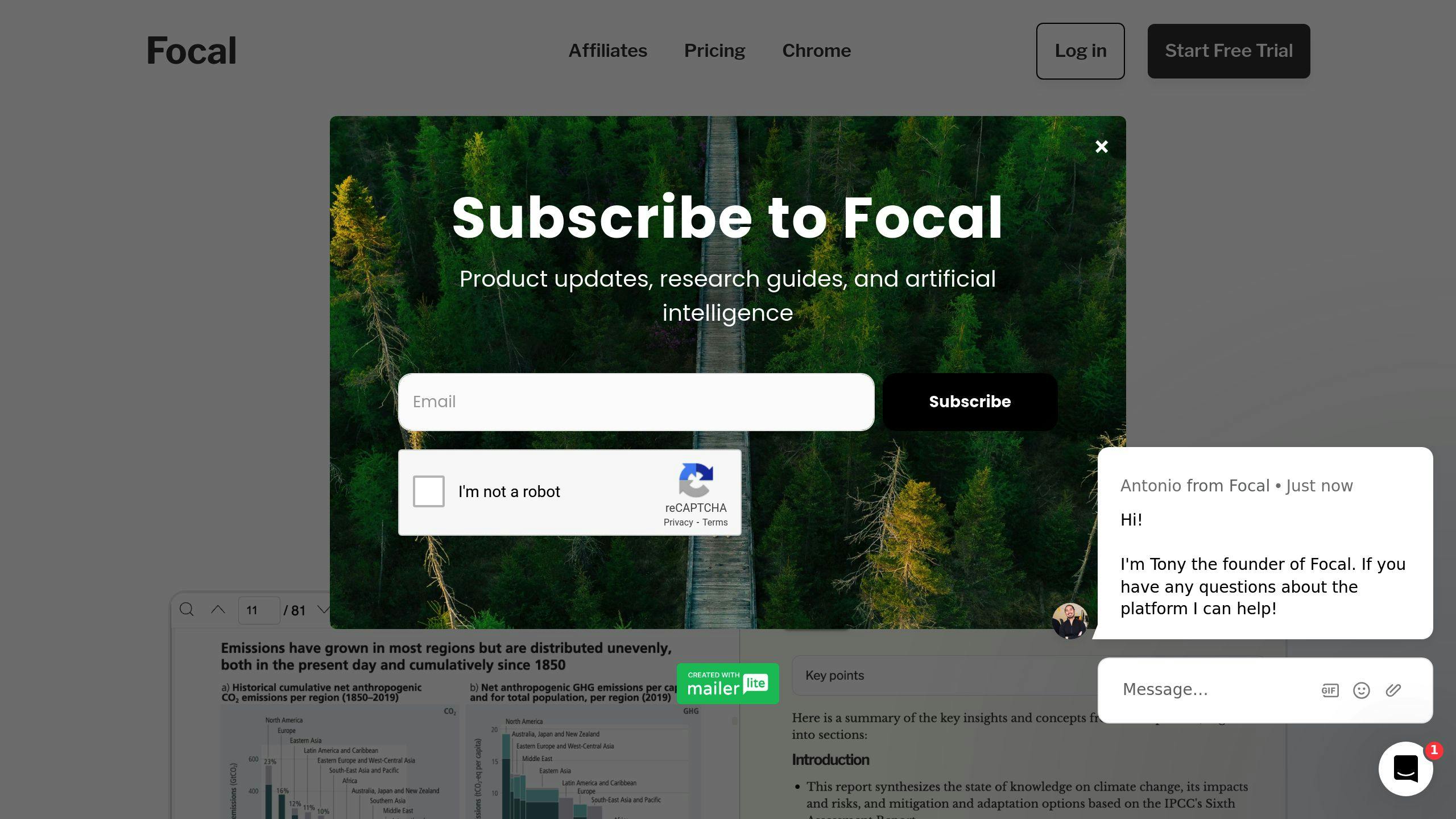June Product Release Announcements
Citations, Student Pricing, Chat History, Suggested Prompts, Copilot Improvements. It's been a bumper June!

Multimodal search is revolutionizing online shopping. Here's what you need to know:
Quick comparison:
| Company | Key Feature | Strength | Weakness |
|---|---|---|---|
| Focal | Google Product Taxonomy | Long-tail queries | Fashion-focused |
| eBay | Multimodal Item Embedding | Big data processing | Relies on seller data |
| Faire | Image-Text Model (ITEm) | Balances image/text | Marketplace-specific |
Results:
Challenges:
Bottom line: Multimodal search is shaping the future of online shopping, making it easier for customers to find what they want and boosting sales for businesses.

Focal's multimodal search system is changing the game in e-commerce product categorization. How? By combining text and visual features to help shoppers find what they're looking for, even when words fail them.
The system digs into a treasure trove of product data:
But here's where it gets interesting: Focal's model is built on the Google Product Taxonomy (GPT). We're talking over 5,500 categories in a tree structure. That's some serious detail.
So, what's the big deal? Well, Focal's system delivers:
Now, you might be wondering how they pulled this off. The secret sauce? Their model treats each taxonomy level as its own classification problem. It's like having a team of experts, each focused on a specific part of the puzzle.
But let's be real - this isn't a small task. Focal's team had to use distributed TensorFlow on Google Cloud Platform to handle the complexity. The result? A model with over 250 million parameters. That's not just big - it's MASSIVE.
For e-commerce businesses looking to follow in Focal's footsteps, here's the takeaway:

eBay's new Multimodal Item Embedding solution is shaking things up. It mixes text and image data to make better recommendations.
What's new?
The results? Pretty impressive:
| Metric | Boost |
|---|---|
| Buyer Engagement | +15% |
| Click Through Rate | +15.9% |
| Purchase Through Rate | +31.5% |
These aren't just numbers. They're from real A/B tests.
Eddie Garcia, eBay's Chief Product Officer, says:
"AI and deep learning has been infused throughout eBay. I think the difference in the last six months has been the dawn of the large language models that make this very conversational."
But eBay's not done. They're:
With 20 billion images and data from 190 markets, eBay's got a LOT to work with. They're bringing order to the chaos of 1.2 billion listings.
eBay's not just about recommendations. They're using machine learning for:
Fun fact: Their machine translation boosted exports by 17.5% (English to Spanish).
eBay's multimodal approach shows how mixing data types can lead to better product discovery and more sales. It's a glimpse into the future of e-commerce.
Faire's marketplace uses a smart image-text model (ITEm) to connect brands and retailers. This model learns from product images and titles to improve product discovery.
ITEm's key features:
The model uses five tasks to learn:
1. Image-text matching
2. Masked image modeling
3. Masked language modeling
4. Global masked language modeling
5. Global masked image modeling
These tasks help ITEm understand images and text better.
ITEm beats other systems in two areas:
| Task | How ITEm Does |
|---|---|
| Same Product Recommendation | Better than single-type models |
| Leaf Category Prediction | Best results, showing it learns well from both images and text |
ITEm works with a big dataset:
| Dataset | Images | Product Categories |
|---|---|---|
| ITOP | 1.1 million | 1,275 |
This dataset has matching products and non-matches to test accuracy.
Faire's tech helps brands:
Brands that use Faire fully get 40% more views and orders in their first month.
Faire's search works for two types of shopping:
This helps different types of customers find what they need.
Let's compare these multimodal search tools:
| Feature | Focal | eBay's System | Faire's ITEm |
|---|---|---|---|
| Data Types | Text, image | Text, image, structured | Text, image |
| Learning | Self-supervised | Supervised | Self-supervised |
| Scalability | High | High | High |
| Discovery | Better | Better | Better |
| Strength | Long-tail queries | Big data processing | Balances image/text |
| Weakness | Fashion-only | Needs seller data | Marketplace-specific |
Focal
eBay's System
Faire's ITEm
Focal
eBay's System
Faire's ITEm
These tools are game-changers:
But there are hurdles:
As online shopping grows, these tools will shape how we buy stuff in the future.
Multimodal search is shaking up online shopping. Here's what you need to know:
1. Better product discovery
Focal, eBay's system, and Faire's ITEm all make it easier for shoppers to find products.
2. Sales boost
Faire saw a 40% increase in views and orders in just one month after launching their multimodal search.
3. Improved accuracy
eBay's solution led to a 15.9% increase in Click Through Rate and a 31.5% jump in Purchase Through Rate.
4. Versatile search
Users can now search with text, images, or both, making shopping more intuitive.
Which tool is best? It depends:
Keep in mind: These tools can be tough for smaller shops to implement. They need serious computing power and careful data handling.
As e-commerce grows, multimodal search will play a big role in its future.